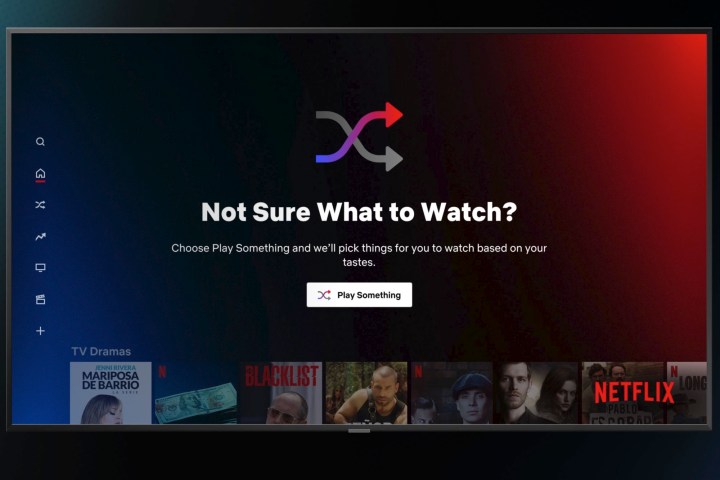
If you have a Netflix subscription, it’s a foregone conclusion that you have spent a lot of time scrolling through the app’s home screen and categories in search of something to watch. To help with this task, Netflix has launched Play Something, a feature that is halfway between a shuffle play and Google’s “I’m feeling lucky” option.
Play Something takes advantage of the fact that Netflix basically knows everything you’ve ever watched on its platform, and will automatically throw you into a series or film that it thinks you’ll enjoy based on that history of activity.
Netflix recognizes that Play Something might not always score with its first pick. Maybe you don’t have time for a two-hour movie tonight, or maybe you’re now totally done with revisiting 90s sitcoms. Whatever the reason, if Play Something fails to enthrall you with its choice, you can click Play Something Else, and the algorithm will pull from a more probable source of hits, like a series or film you’re already watching, a series or film on your list, or an unfinished series or film you may want to revisit.
There are several ways to access Play Something if you’re using the Netflix app on a TV or set-top box (mobile support will be added at a later date). You’ll find it under your profile name on the login screen, or in the navigation menu on the left side of the screen.
Amusingly, it will also show up in the 10th row on the Netflix homepage, presumably as a way of saying “hey, looks like you’re doomscrolling again. Why not try this feature?”
As more and more streaming platforms attempt to curate content for viewers from a variety of sources — like Google’s Google TV interface for Android TV — services like Netflix can no longer bank on folks diving straight into their app to look for something to watch. Play Something is a way to keep folks from abandoning Netflix in favor of another service when all of that scrolling proves fruitless.



